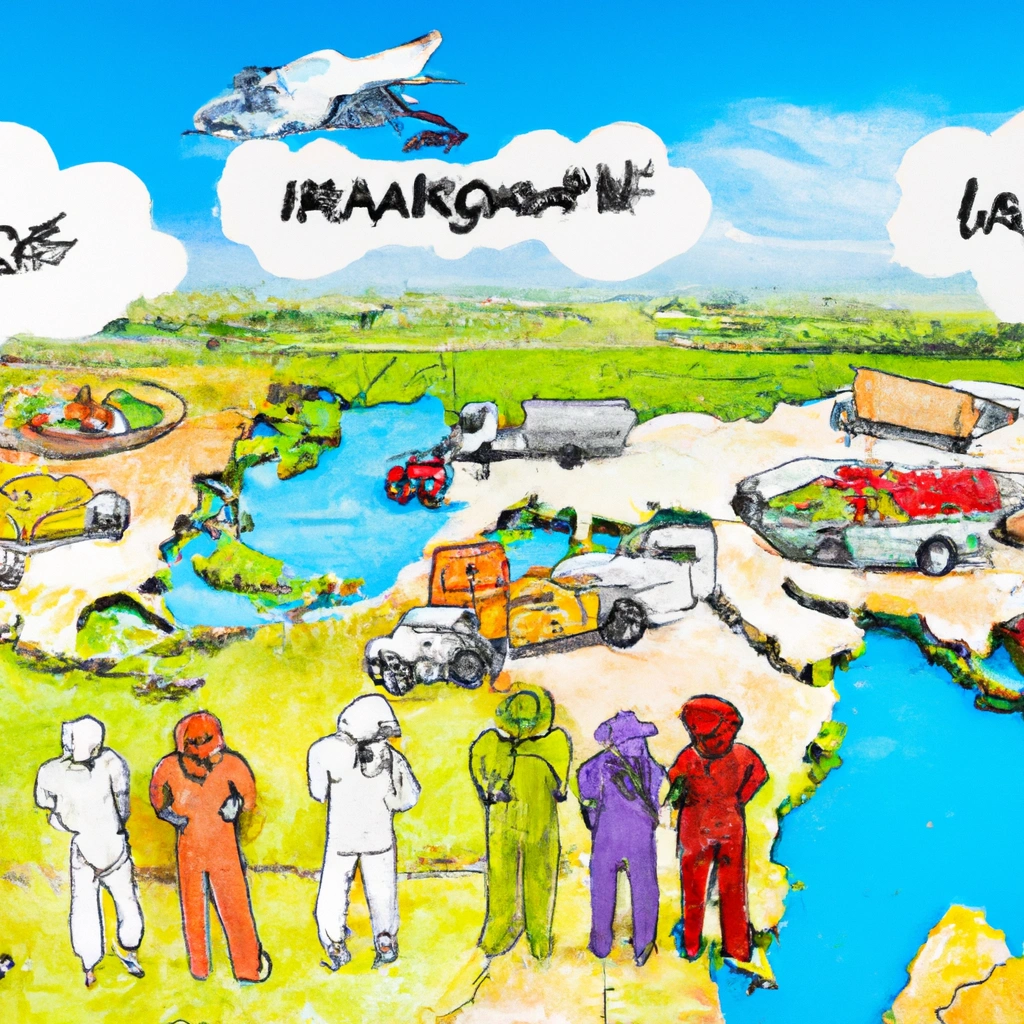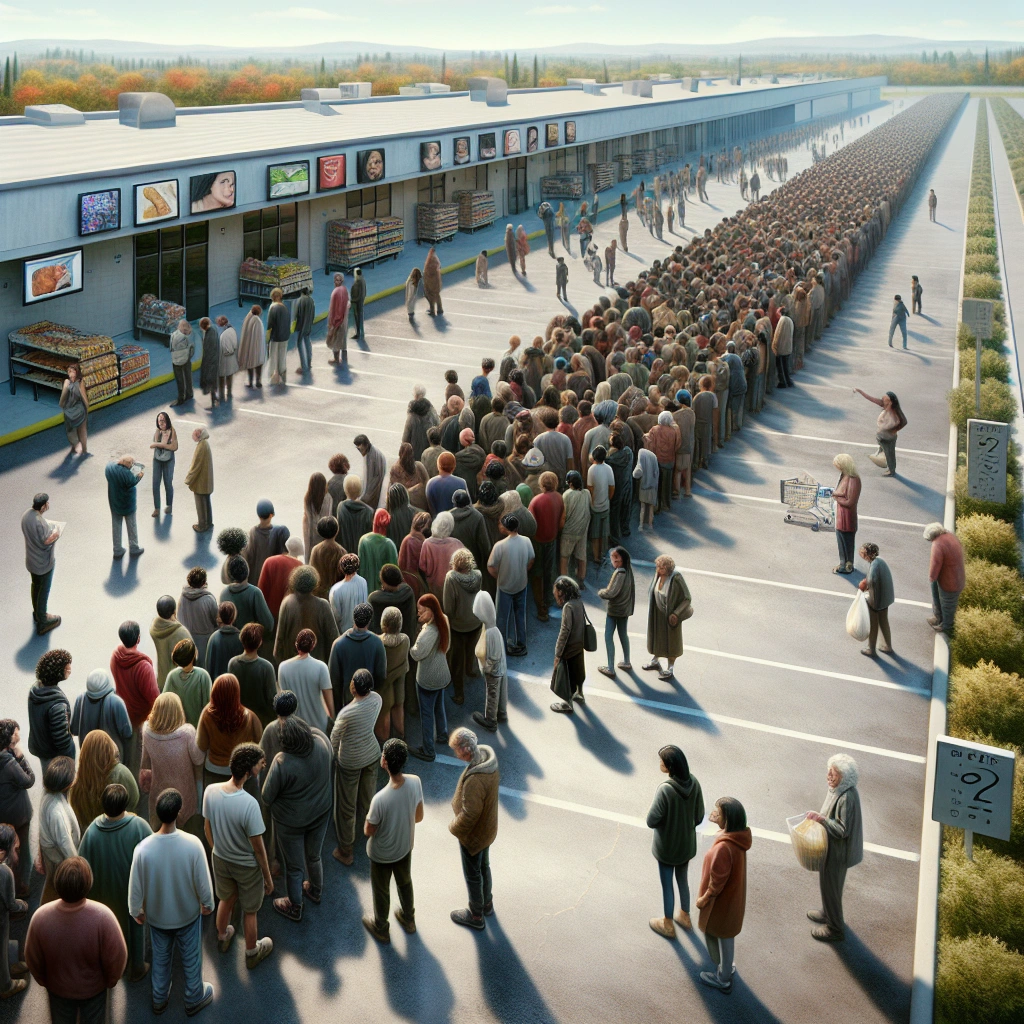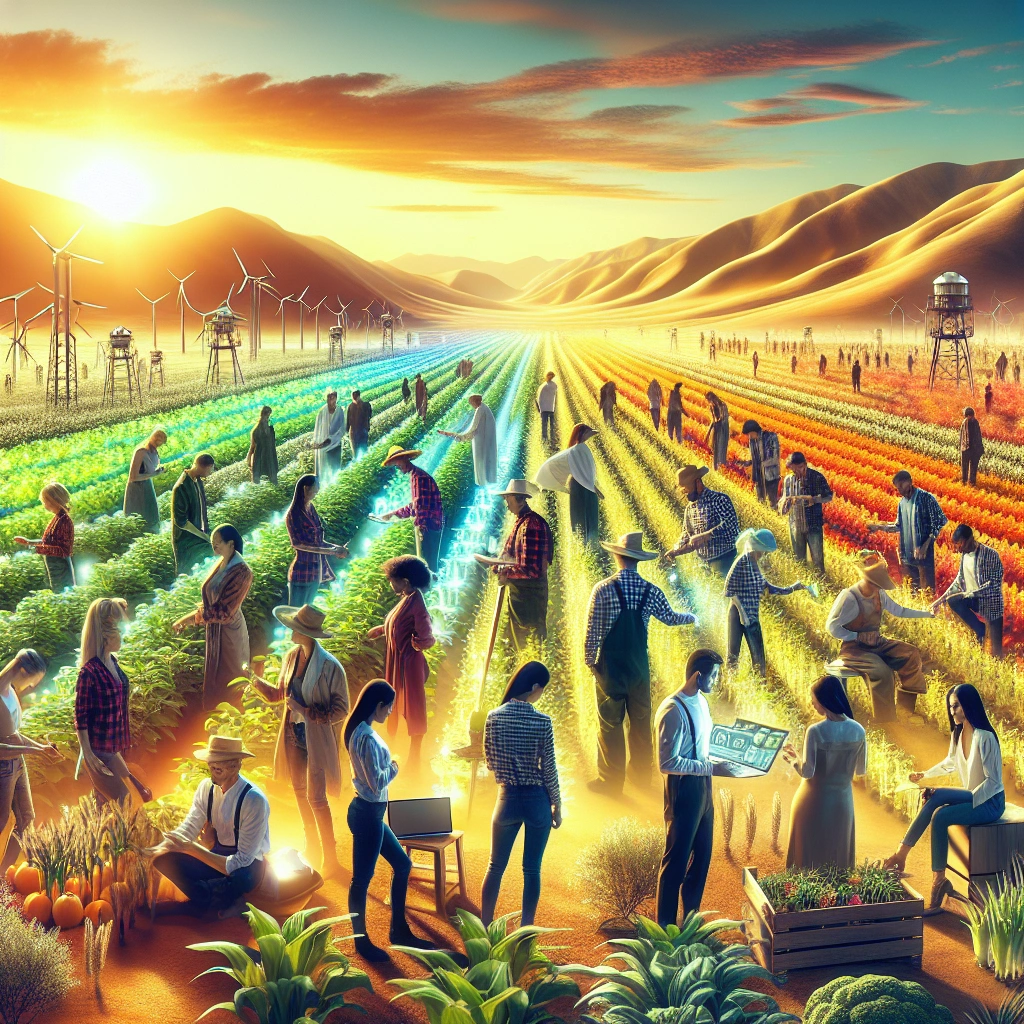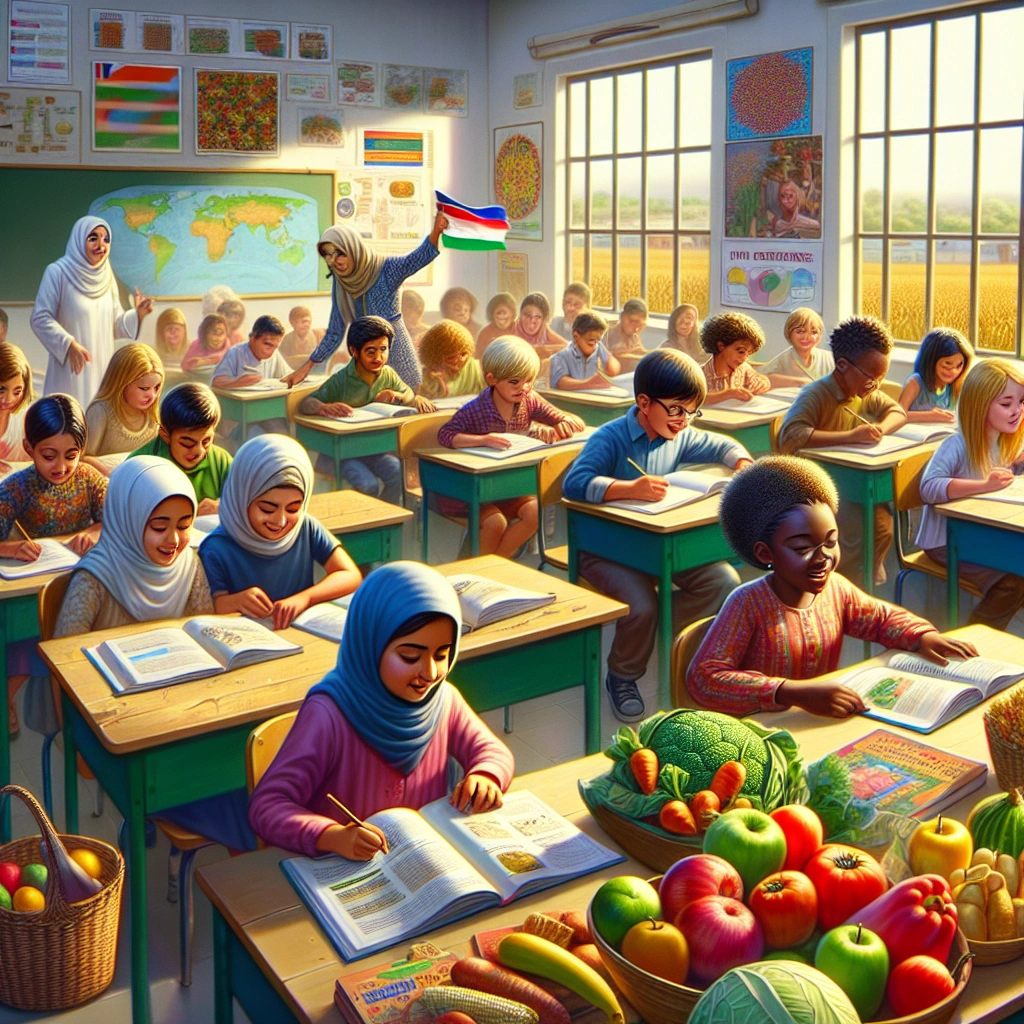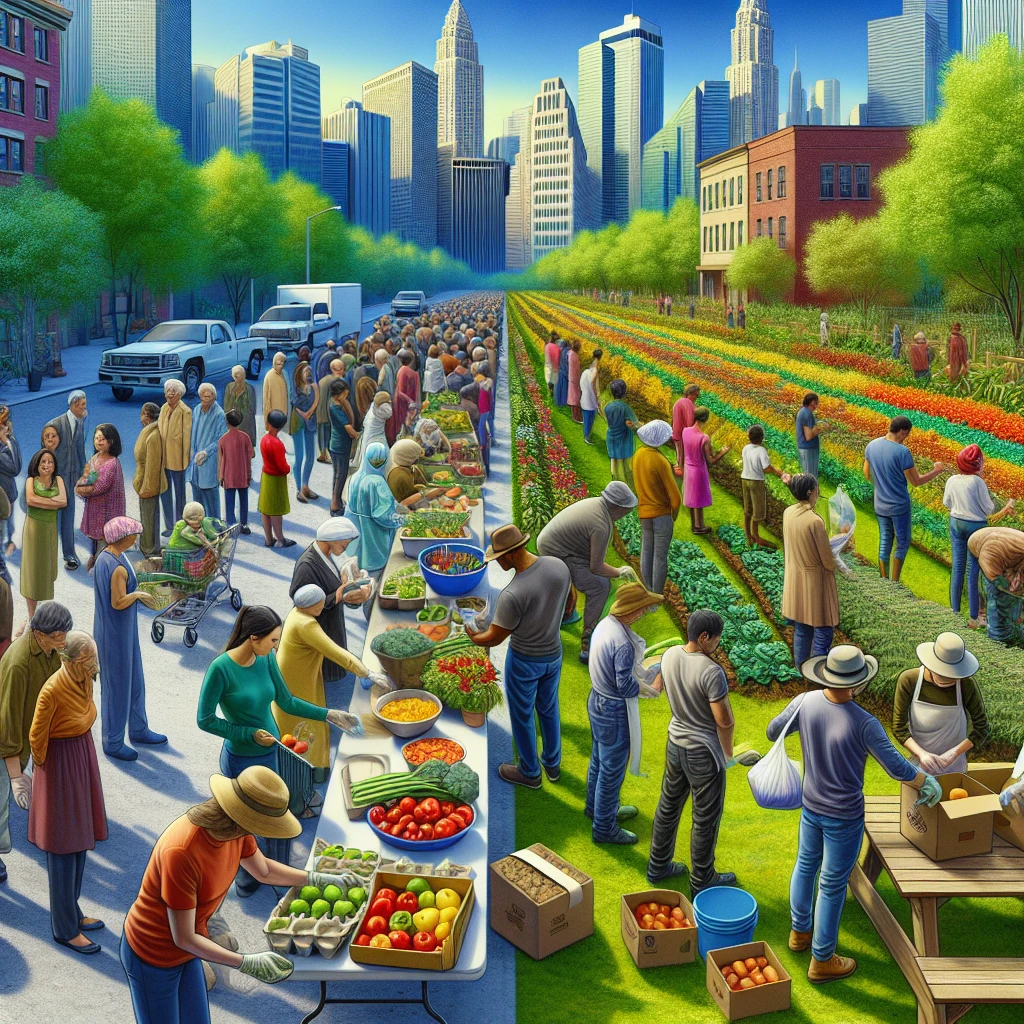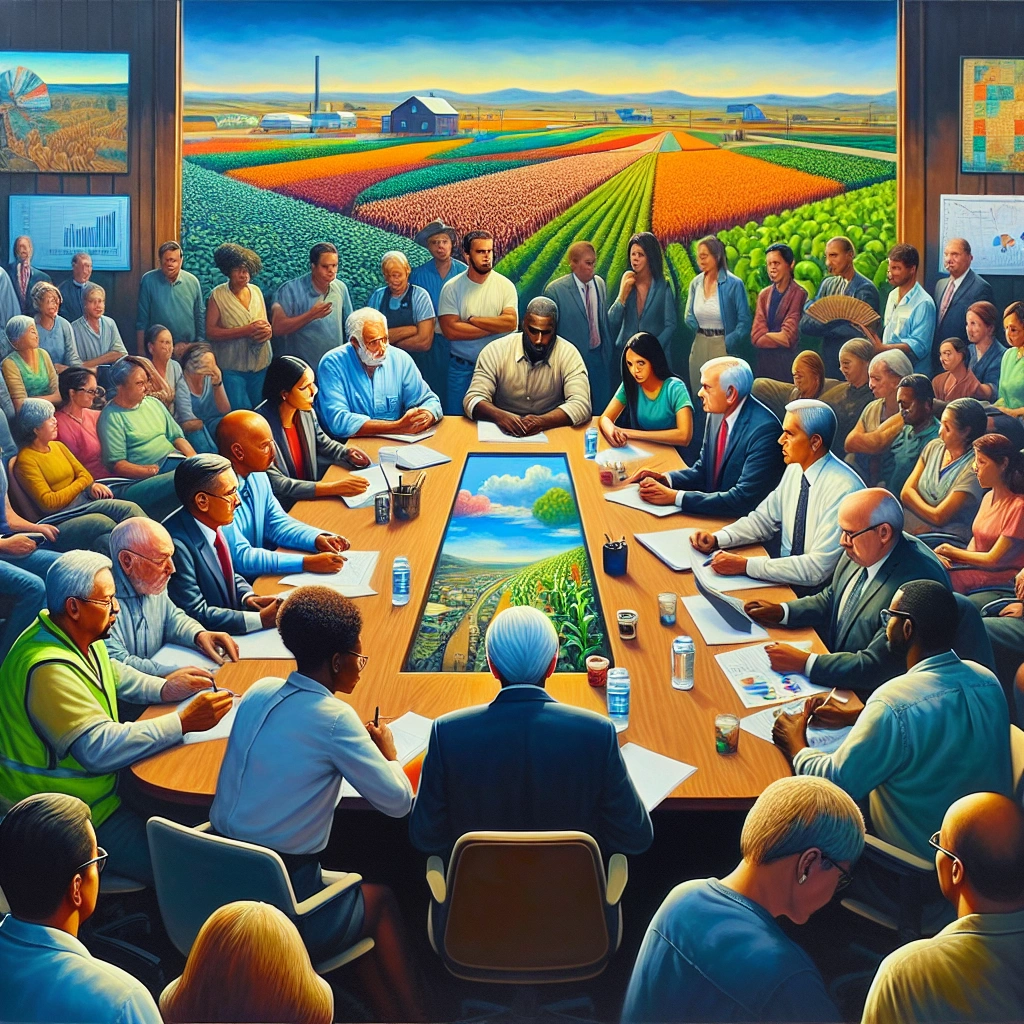

A food shortage tracker is a tool used to monitor and measure the availability and access to food in different regions. It helps in identifying areas with food scarcity and enables organizations to take timely actions to address the issue.
The impacts of food shortage on global crisis include increased hunger, malnutrition, and social unrest, making it essential to have a reliable tracker to monitor food availability and distribution.
Understanding Food Shortage
What causes food shortage
Food shortages can be caused by a variety of factors, including natural disasters like droughts, floods, and earthquakes, which disrupt food production and distribution. Additionally, conflicts and wars can lead to the destruction of agricultural infrastructure, affecting food availability.
Economic instability, poverty, and lack of access to healthcare also contribute to food shortages by impacting food production and distribution. These factors, combined with the uneven distribution of resources, can lead to widespread food insecurity and scarcity.
Factors contributing to food scarcity
Several factors contribute to food scarcity, such as poverty, unemployment, and low income, which limit access to affordable and nutritious food. Lack of affordable housing, chronic health conditions, and inadequate healthcare access also play a significant role in creating food scarcity.
Additionally, systemic issues like racial disparities and disability can further exacerbate the problem, making it challenging for certain populations to access an adequate food supply.
Effects of climate change on food production
Climate change has a direct impact on food production by disrupting food availability, reducing access to food, and affecting food quality. Increased temperatures, changes in precipitation patterns, extreme weather events, and reduced water availability all lead to reduced agricultural productivity.
Furthermore, rising global temperatures, sea levels, heatwaves, droughts, floods, cyclones, and wildfires pose significant threats to agricultural production and food security. It is crucial to address these climate-related challenges to ensure sustainable food production for the future.
| Element | Impact |
|---|---|
| Natural Disasters | Disrupt food production and distribution |
| Conflicts and Wars | Destroy agricultural infrastructure |
| Economic Instability | Affects food availability |
| Poverty and Unemployment | Limit access to affordable and nutritious food |
| Systemic Issues | Exacerbate food scarcity |
| Climate Change | Reduces agricultural productivity |
This is how we can address food shortage, understand the contributing factors, and combat the effects of climate change to ensure food security for all.
The Role of Technology in Tracking Food Shortage
Utilizing data and analytics for forecasting
Advanced technologies such as A. I. and machine learning play a crucial role in forecasting food shortage by analyzing large volumes of data. By leveraging these tools, organizations can predict areas of need and efficiently distribute food to areas experiencing hunger.
Tools and platforms for monitoring food security
In the realm of monitoring food security, technologies such as GIS mapping, weed detection, and crop health monitoring are revolutionizing the way we track and assess food availability and distribution. For instance, the Dimitra App and HungerMap LIVE utilize real-time data to track and predict food security, providing valuable insights for addressing hunger.
Innovations in agricultural practices and food distribution
Innovations in agriculture, ranging from precision agriculture to indoor vertical farming and livestock farming technology, are transforming the industry. These advancements not only enhance productivity but also contribute to sustainable food distribution, ultimately playing a vital role in addressing food shortage and ensuring food security for all.
Global Food Shortage Tracker
Tracking food scarcity across different regions
The global food shortage tracker primarily focuses on monitoring and documenting food scarcity across various regions worldwide. This involves analyzing data on agricultural production, climate impacts, supply chain disruptions, and socioeconomic factors contributing to food shortages.
Statistics on hunger and malnutrition
In terms of statistics, the situation is dire, with over a quarter of a billion people experiencing acute hunger globally, and about 783 million individuals still facing hunger despite there being enough food produced. Additionally, around 13 million people are projected to be enduring crisis levels of hunger in specific regions, such as the Sahel region and other hotspot areas.
Identifying vulnerable populations and at-risk areas
Identifying vulnerable populations and at-risk areas is crucial for targeting interventions and aid efforts. Key areas such as Burkina Faso, Chad, Mali, Ethiopia, Nigeria, South Sudan, and Yemen are particularly at risk for catastrophic levels of hunger, malnutrition, and food insecurity, demanding immediate attention and swift intervention.
Government Initiatives and Policy Interventions
Strategies for addressing food insecurity
The US government implements various strategies to address food insecurity, such as the Supplemental Nutrition Assistance Program (SNAP) and the National Institute of Food and Agriculture (NIFA) research, education, and extension work. SNAP provides essential support to families experiencing food insecurity, ensuring access to nutritious meals, while NIFA focuses on conducting research, education, and extension activities within the Land-Grant University System to combat hunger effectively.
International cooperation in combating food shortage
To combat food shortage at an international level, organizations like the World Food Programme and the International Monetary Fund (IMF) have played vital roles. The World Food Programme provides crucial humanitarian assistance to address food insecurity globally, while the IMF’s new Food Crisis Strategy emphasizes enhanced cooperation with partners to support vulnerable populations and facilitate increased trade in food and production inputs.
Advocacy for sustainable agriculture and food systems
The US Department of Agriculture (USDA) and the World Bank are actively advocating for sustainable agriculture and food systems. The USDA has highlighted significant investments aimed at building sustainable, resilient, and inclusive food systems, while the World Bank is responding to the escalating food crisis by supporting production and producers, facilitating increased trade in food, and investing in sustainable food security.
| Organization/Agency | Initiatives |
|---|---|
| SNAP | Provides crucial support to families experiencing food insecurity |
| NIFA | Conducts research, education, and extension activities to combat hunger |
| World Food Programme | Offers humanitarian assistance to address food insecurity globally |
| IMF | Emphasizes enhanced cooperation with partners to support vulnerable populations and facilitate increased trade in food and production inputs |
| USDA | Highlights significant investments in building sustainable, resilient, and inclusive food systems |
| World Bank | Supports production and producers, facilitates increased trade in food, and invests in sustainable food security |
These initiatives and international collaborations are essential in addressing the critical issue of food shortage and ensuring the development of sustainable agriculture and food systems.
Emergency Response and Humanitarian Aid
Providing immediate relief to communities in crisis
In times of crisis, the immediate relief to communities plays a vital role in saving lives and mitigating suffering. Organizations and volunteers rush to provide food, water, shelter, and medical care to those affected, offering a glimmer of hope amidst the chaos.
One poignant example is the swift response to natural disasters such as hurricanes or earthquakes, where relief efforts aim to restore a sense of normalcy when everything seems shattered. Supporting these immediate relief efforts ensures that affected communities can recover sooner and rebuild their lives.
Role of NGOs and humanitarian organizations in food distribution
NGOs and humanitarian organizations play a pivotal role in the distribution of food during crises, as they are often the first responders on the ground. Their ability to efficiently mobilize resources and coordinate with local authorities enables them to reach affected populations rapidly.
This agility is essential in ensuring that food reaches those in dire need, offering sustenance and resilience during trying times. An exemplary instance of this is the World Food Programme’s partnerships with NGOs to deliver food aid to conflict-affected areas, highlighting the crucial role of these organizations in food distribution efforts.
Challenges in delivering aid to remote or conflict-affected areas
Delivering aid to remote or conflict-affected areas presents a myriad of challenges, from logistical hurdles to security risks. Limited infrastructure and access make it difficult to reach these communities, exacerbating their vulnerability.
For instance, in war-torn regions like Syria, aid agencies face grave challenges in accessing and delivering supplies to those in need. Overcoming these obstacles requires innovative solutions and the collaboration of various stakeholders to ensure that aid reaches every corner, leaving no one behind.
| Challenges | Solutions |
|---|---|
| Limited infrastructure | Aerial delivery methods |
| Security risks | Collaborative security protocols |
| Inaccessible areas | Community-based distribution networks |
By comprehensively addressing these challenges, humanitarian efforts can effectively reach and aid populations in remote or conflict-affected regions, making a significant impact where it’s needed the most.
Economic Impact of Food Shortage
Cost of food scarcity on national economies
The cost of food scarcity on national economies is staggering, with billions being added to balance of payments pressures. This directly erodes countries’ international reserves and impairs their ability to pay for essential food and fertilizer imports.
Additionally, food insecurity has been linked to low wages, adverse social and economic conditions, and limited access to healthy foods, contributing to economic misery in low-income countries.
Market fluctuations and price volatility
The economic impact of food shortage is further exacerbated by market fluctuations and price volatility. Producers may use fewer inputs like fertilizer and high-quality seeds, dampening their investments in areas that improve productivity, consequently affecting their income and the overall availability of food.
Unexpected price declines can lead to a sharp fall in incomes, while price rises often reduce the quantity and quality of foods.
Financial implications for households and businesses
The financial implications for households and businesses are dire, as food insecurity leads to increased illness costs and diminished lifetime earnings. Acute food insecurity has also been a result of conflict and economic shocks, impacting millions of people and countries.
This results in a reduced ability for households to maintain a healthy life due to insufficient resources to access enough food.
Societal and Health Consequences
Nutrition and health outcomes of food insecurity
- Individuals living in food-insecure households are more susceptible to various health issues, including infectious diseases, chronic conditions such as depression and heart disease, and reduced nutrient intakes, leading to cognitive problems and anemia.
- This lack of proper nutrition due to food insecurity can significantly impact overall health outcomes, contributing to a higher prevalence of oral health issues, injury, and long-term chronic conditions.
Social unrest and political instability
- Food insecurity has been identified as a factor that can lead to social unrest and political instability, often stemming from inequitable food distribution, poverty, and political unrest.
- Instances of food riots and protests, as observed during the food-price crisis of 2007–2008, demonstrate the direct linkage between food insecurity and social upheaval, serving as a vital indicator for international community intervention.
Long-term effects on education and human development
- Children’s access to education often becomes compromised in food-insecure households, particularly affecting girls’ schooling, a detrimental impact stemming from decisions made by food-insecure families due to limited resources.
- Food insecurity has been recognized as a powerful stressor for families, significantly affecting child health, development, and learning, influencing physical, social, cognitive, and behavioral aspects.
Now, that’s a wrap!
Addressing Food Shortage Through Innovation
Advancements in food production and agriculture
The world of agriculture is witnessing a technological revolution. From precision agriculture and robotic systems to innovations like laser scarecrows, the industry is evolving rapidly.
These advancements not only make businesses more profitable and efficient but also contribute to environmental sustainability. For instance, Bee Vectoring Technologies and Indoor Vertical Farming are shaping the future of food production, hinting at a promising horizon that could help mitigate food shortages.
As we strive to increase food production by up to 68% by 2050, these advancements are crucial in addressing the challenges ahead.
Sustainable solutions for improving food security
To achieve sustainability and food security, various approaches come into play. These include efforts to limit food losses and waste, promoting the consumption of plant-based foods, and implementing initiatives like healthy corner stores and food cooperatives.
Additionally, practices such as closing the yield gap and using fertilizer more efficiently are vital in improving global food security. These sustainable solutions offer practical pathways to combat food shortages while promoting equitable access to essential nourishment for all.
Collaborative efforts in research and technology development
The landscape of agriculture and food security is undergoing transformation through collaborative endeavors in research and technology development. Projects such as the World Bank’s $45 billion funding initiative to address food insecurity in 90 nations and the USDA and USAID’s collaborative work with universities and partners globally highlight the importance of joint efforts.
Furthermore, the National Science Foundation’s Convergence Accelerator and the initiatives by various players involved in addressing the sustainability of global food and agricultural systems demonstrate the power of collaboration in driving impactful change. Through these collective endeavors, the pursuit of scientific knowledge and the formation of partnerships contribute to a more sustainable and secure food future for all.
| Advancements in Food Production | Sustainable Solutions for Food Security | Collaborative Research Efforts |
|---|---|---|
| Precision Agriculture | Plant-Based Diets | World Bank’s Funding Initiative |
| Indoor Vertical Farming | Efficient Fertilizer Use | USDA and USAID Collaborations |
| Bee Vectoring Technologies | Healthy Corner Stores Initiatives | National Science Foundation |
Let’s embrace these advancements, sustainable solutions, and collaborative efforts as we navigate the crucial journey of addressing food shortage through innovation.
Strategies for Sustainable Food Systems
Promoting sustainable farming practices
Sustainable agriculture practices are crucial for ensuring the long-term health of the environment and the availability of food for future generations. By utilizing local resources, reducing water usage, and implementing natural fertilizers, farmers can maintain soil quality, prevent erosion, and protect natural resources.
Reducing food waste and improving distribution
Reducing food waste and enhancing distribution channels are essential to combatting food shortages. Methods to achieve this include improving product development, optimizing storage, implementing efficient shopping and ordering practices, enhancing marketing and labeling strategies, and promoting effective cooking methods.
Fostering community resilience and self-sufficiency
The resilience and self-sufficiency of communities play a pivotal role in ensuring sustainable food systems. Encouraging individuals, households, and communities to gain knowledge about potential hazards, prevent adverse consequences, and implement appropriate incident responses is essential.
Additionally, fostering civic responsibility and promoting effective bystander responses can contribute significantly to building community resilience.
| Sustainable Farming Practices | Reducing Food Waste and Improving Distribution | Community Resilience and Self-Sufficiency |
|---|---|---|
| • Use of local resources | • Improving product development and storage | • Encouraging civic responsibility and community reliance |
| • Reducing water usage | • Efficient shopping and ordering practices | • Promoting effective incident responses |
| • Implementation of natural fertilizers | • Enhanced marketing and labeling strategies | • Fostering self- and community-reliance |
This table provides an overview of the key elements in promoting sustainable food systems, including sustainable farming practices, reducing food waste, and building community resilience.
The Role of Education and Awareness
Raising awareness about global food shortage
Raising awareness about the global food shortage is crucial to prompt action and support. It involves educating people about the severity of the issue and its impact on communities worldwide. By utilizing social media campaigns, educational seminars, and community events, individuals can be informed about the reality of food scarcity and its implications. Additionally, collaborating with influential figures in the media and partnering with humanitarian organizations can help amplify the message and ensure that it reaches a wider audience.
Empowering communities with knowledge and resources
Empowering communities with knowledge and resources is essential for sustainable change. By providing communities with access to educational materials, agricultural resources, and training programs, they can develop self-sufficiency and contribute to alleviating food scarcity. Initiatives like community gardens, agricultural workshops, and micro-finance programs can equip individuals with the skills and resources needed to cultivate their own food and improve their food security. Moreover, partnerships with local businesses and government agencies can provide communities with the necessary tools and resources to thrive independently.
Educational programs for sustainable food practices
Educational programs for sustainable food practices play a crucial role in shaping a more sustainable future. By implementing comprehensive educational programs in schools and communities, individuals can learn about sustainable agricultural techniques, responsible consumption, and the importance of preserving natural resources. These programs can include hands-on activities, field trips to local farms, and workshops led by environmental experts. By instilling knowledge and skills related to sustainability from a young age, future generations can make informed decisions that contribute to a more sustainable and food-secure world.
| Key Points |
|---|
| Raising awareness using social media campaigns and educational seminars |
| Empowering communities through access to educational materials and resources |
| Implementing comprehensive educational programs in schools and communities |
Remember, raising awareness is just the first step! Empowerment through access, and transforming knowledge into sustainable action is what drives meaningful change.
Let’s make a difference!
Overcoming Barriers to Food Accessibility
Infrastructure challenges in food distribution
Outdated infrastructure and poor road conditions disrupt the food supply chain, resulting in increased food waste and hindering agricultural productivity, making it difficult for farmers to produce enough food for the growing population. Financing rural infrastructure is crucial to achieving food security for millions living in hunger.
Equity and access to nutritious food
Distance to grocery stores and lack of transportation are barriers that inhibit access to healthy food options, leading to disparities in nutrition and healthy food access. Social barriers such as crime and poverty not only deter residents from accessing local grocery stores but also contribute to food insecurity and the lack of access to affordable nutritious food, which is associated with increased risk for chronic health conditions such as diabetes, obesity, and heart disease.
Solutions for improving food availability in underserved areas
Communities can use strategies to make it easier for people to buy fresh, nutritious food close to home, school, and work. Changing zoning and giving incentives to lure supermarkets and farmers’ markets to food deserts, or encouraging corner stores to stock fruits and vegetables, can help improve food availability in underserved areas.
Additionally, enhancing infrastructure, reducing food waste, and promoting more efficient production techniques are key ways to further improve food security and access to healthy foods.
Food Shortage Tracker: Public Health Perspectives
Link between food insecurity and public health
Food insecurity has a direct and significant impact on public health. When individuals and families lack access to adequate and nutritious food, it can lead to a variety of health issues, including malnutrition, micronutrient deficiencies, and chronic diseases.
The stress and anxiety associated with food insecurity can also have adverse effects on mental health, leading to increased levels of depression and anxiety. Thus, addressing food insecurity is essential for safeguarding public health and promoting overall well-being.
Addressing malnutrition and micronutrient deficiencies
Malnutrition and micronutrient deficiencies are prevalent among individuals facing food insecurity. Inadequate access to nutritious food can result in a lack of essential vitamins and minerals, leading to malnutrition and various health complications.
For example, micronutrient deficiencies, such as those of iron and vitamin A, are commonly associated with food insecurity, increasing the risk of anemia and other health issues. Therefore, holistic interventions aimed at addressing food shortages should prioritize ensuring access to diverse and nutrient-rich foods to combat malnutrition and micronutrient deficiencies effectively.
Strategies for improving food access and dietary diversity
Implementing effective strategies to improve food access and dietary diversity is crucial in combating food shortages. Community-based participatory interventions, such as workshops and educational programs, can empower individuals and communities to plan and engage in agricultural activities, raising awareness about nutrition and healthy eating.
Additionally, collaborative efforts involving government nutrition programs, school meal initiatives, and partnerships with local food suppliers can greatly enhance access to nutritious foods and promote dietary diversity. By leveraging a multifaceted approach, encompassing education, community involvement, and policy changes, it is possible to address the root causes of food shortages and improve public health outcomes.
| Strategy | Description |
|---|---|
| Community-based participatory interventions | Empower communities in planning agricultural activities, raise nutrition awareness |
| Collaborative initiatives | Optimize school meal programs, provide nutrition education, increase access to nutritious foods |
The link between food insecurity and public health is undeniable, and addressing malnutrition and micronutrient deficiencies through effective strategies for improving food access and dietary diversity is paramount for fostering healthier communities and combating the negative impacts of food shortages. By instilling a comprehensive approach to food security, we can pave the way for a healthier and more resilient society.
Cross-Sector Collaboration for Food Security
Engaging diverse stakeholders in food security efforts
Cross-sector collaboration for food security involves engaging a wide range of stakeholders such as farmers, food processors, policymakers, and non-profit organizations. By bringing diverse perspectives to the table, we can develop more comprehensive and effective strategies to address food shortages.
Partnerships between government, industry, and civil society
Partnerships between government, industry, and civil society are essential for creating sustainable solutions to food insecurity. For example, public-private partnerships can help leverage resources and expertise to improve food distribution systems and support local farmers.
Coordinated action for addressing food shortage on a global scale
To address food shortages on a global scale, coordinated action is crucial. This can involve sharing best practices across regions, investing in agricultural technology, and establishing international trade agreements to ensure a steady food supply worldwide.
| Stakeholders | Role in Food Security Efforts |
|---|---|
| Farmers | Sustainable agricultural practices |
| Policymakers | Implementing supportive policies |
| Non-profit organizations | Providing aid and support |
Cross-sector collaboration is key to tackling food shortages, as it brings together diverse expertise and resources to address this critical issue on a global scale.
Kindly let me know in case you want more information or have any specific requests.
The Future of Food Security
Trends and projections in global food supply
Global food supply projections indicate a 1.3% annual increase over the next decade. This growth is anticipated to be slower than the previous decade due to a predicted slowdown in population and per capita income growth.
The demand for food continues to rise, presenting challenges in meeting the needs of a growing global population.
Emerging challenges and opportunities in food production
The food industry faces a multitude of challenges, including the growing demand for healthier and sustainable food products, technological advancements, and the need to attract and retain employees. However, these challenges also bring opportunities for innovation and progress, especially in meeting the increasing global population’s dietary needs.
Building resilience for future food crises
Building resilience in food systems is crucial to prevent and mitigate future food crises. Anticipating disruptions and implementing measures to prevent them is essential.
Scaling high-impact innovations and strengthening local food supply chains are key strategies to ensure a healthy and resilient food supply for the future.
Recommended Amazon Products for Food Shortage Tracker
Here’s a curated list of products that can help you track food shortage with ease. These recommendations are based on relevance to the topic and positive customer reviews.
Food Storage Containers
Food storage containers are essential for keeping surplus food items fresh and safe from pests. The Rubbermaid Brilliance Food Storage Containers are known for their airtight seals and durability, making them ideal for long-term food storage.


| Pros | Cons |
|---|---|
| Airtight seals for freshness | May take up storage space |
| Durable and stackable | Limited capacity for larger items |
| Clear design for easy visibility | Not suitable for bulk storage |
Solar-Powered Flashlight and Radio
During food shortage emergencies, access to reliable communication and light sources is crucial. The RunningSnail Solar Crank NOAA Weather Radio serves as a multifunctional tool, providing illumination and access to vital weather updates.


| Pros | Cons |
|---|---|
| Solar and hand-crank power options | Radio reception may vary |
| Built-in flashlight and SOS alarm | Compact size limits battery capacity |
| NOAA weather band for alerts | Limited range for radio signals |
Non-Perishable Food Items
Non-perishable food items are essential for emergency food supply kits. The Augason Farms 30-Day Emergency Food Storage Supply offers a variety of ready-to-eat meals and durable packaging for long shelf life.


| Pros | Cons |
|---|---|
| Long shelf life of up to 25 years | May contain allergens for some individuals |
| Variety of meal options | Bulkier packaging for storage |
| Easy preparation for quick meals | Limited customization of food choices |
Water Filtration System
Access to clean and safe drinking water is essential for managing food shortage crises. The LifeStraw Personal Water Filter is a portable and effective solution for filtering contaminated water, providing up to 1,000 gallons of clean drinking water.


| Pros | Cons |
|---|---|
| Lightweight and portable design | Limited capacity for group use |
| Removes 99.9999% of waterborne bacteria | Suction required for operation |
| No additional chemicals or batteries | Does not purify saltwater |
Top Recommended Product for Food Shortage Tracker
If you’re looking for the best solution for tracking food shortage, we highly recommend the LifeStraw Personal Water Filter. Here’s why:
-
Pros:
- Lightweight and portable design
- Removes 99.9999% of waterborne bacteria
- No additional chemicals or batteries required
-
Cons:
- Limited capacity for group use
- Suction required for operation
- Does not purify saltwater
Ready to improve your ability to manage food shortage crises? Check out the LifeStraw Personal Water Filter today for the best results!
Conclusion
The food shortage tracker provides valuable information on the current status of food availability and distribution. By tracking food shortages, organizations can strategically allocate resources to areas in need and develop effective relief efforts.
This tool is essential in addressing and mitigating the impact of food scarcity on vulnerable populations.
Furthermore, the food shortage tracker enables policymakers and government agencies to make informed decisions and implement policies that can help prevent food crises. It serves as a crucial tool in identifying trends and patterns in food shortages, which can guide long-term planning and sustainable solutions to address food insecurity.
The data gathered from the tracker also allows for better coordination among stakeholders in the food supply chain.
The food shortage tracker plays a vital role in promoting transparency and accountability in addressing global food issues. By providing real-time data and insights, it empowers communities, governments, and organizations to take proactive measures in ensuring food security for all.
The tracker serves as a catalyst for collaboration and innovation in developing long-lasting solutions to combat food shortages worldwide.


